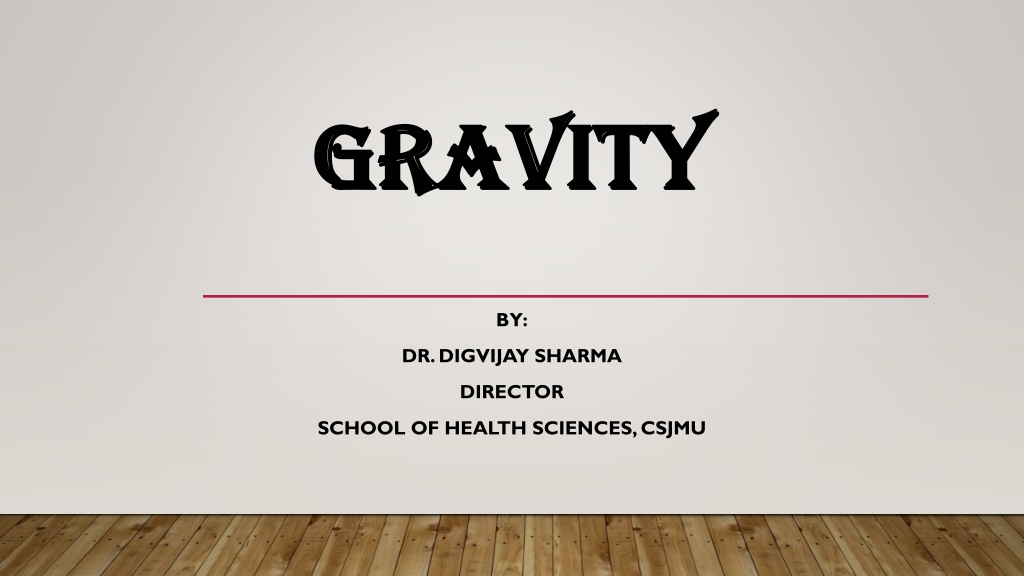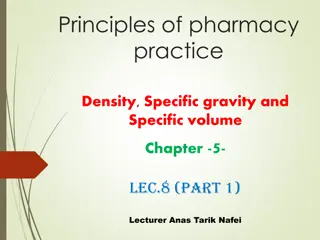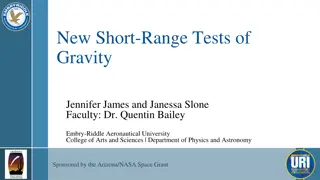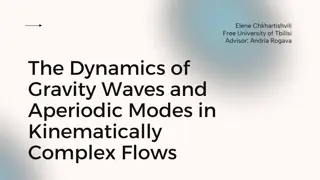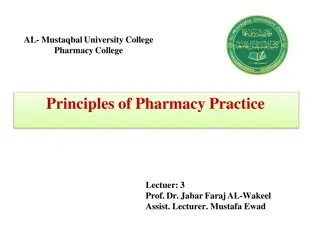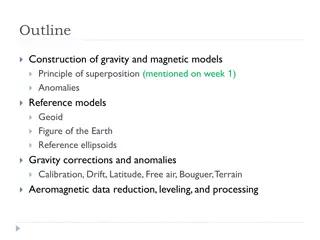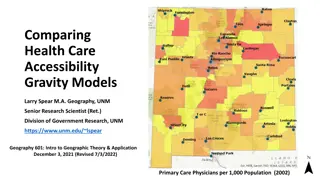Understanding Gravity and Center of Gravity in Physics
Gravity is the force of attraction between masses, such as Earth and objects. It gives weight to objects and has a magnitude of 32ft/s2 on Earth. The Center of Gravity (COG) is a hypothetical point where all mass appears concentrated. It plays a crucial role in determining how objects balance and move. Segments of the body have their own COG, affecting overall balance. Understanding these concepts helps explain how objects behave in relation to gravity.
Download Presentation

Please find below an Image/Link to download the presentation.
The content on the website is provided AS IS for your information and personal use only. It may not be sold, licensed, or shared on other websites without obtaining consent from the author. Download presentation by click this link. If you encounter any issues during the download, it is possible that the publisher has removed the file from their server.
E N D
Presentation Transcript
GRAVITY GRAVITY BY: DR. DIGVIJAY SHARMA DIRECTOR SCHOOL OF HEALTH SCIENCES, CSJMU
DEFINITION DEFINITION Gravity is the attraction of the mass of the earth for the mass of other objects and on earth, has a magnitude of 32ft/s2 The force of gravity gives an object weight. wt= mass 32ft/s2 Unit of Mass= kg or pounds
CENTRE OF GRAVITY CENTRE OF GRAVITY The centre of gravity (COG) is a hypothetical point at which all the mass would appear to be concentrated and is the point at which the force of gravity would appear to act. In a symmetrical object the COG is located in the geometrical centre of the object. In asymmetrical object the COG will be located towards the heavier and where the mass will be evenly distributed around the point. COG may also lie outside the object, it is still the point at which gravity appears to act. However, the COG of an object can be approximated if one considers it as the balance point of the object.
LINE LINE OF GRAVITY OF GRAVITY The action line and direction line of the force of gravity on an object are always vertically downwards towards the centre of earth, regardless of the orientation in space of the object. This gravity vector is commonly referred to as the Line of Gravity (LOG)
SEGMENTAL COG SEGMENTAL COG Each segment in the body is acted on by the force of gravity and has its own COG. When two adjacent segments are combined and considered as one rigid segment, the new larger segment will have a COG that is located between and in line with the original two COGs When segments are not equal in mass the new COG will lie closer to heavier segment The COG of any rigid object or fixed series of segments will remain unchanged regardless of the position of that object in space. However, when an object is composed of linked and movable segments the location of the COG of the combined unit will change if the segments are re-arranged relative to each other
COG OF HUMAN BODY COG OF HUMAN BODY When all the segments of the body are combined and the body is taken as a single rigid object in anatomical position, the COG of the body lies approximately anterior to the second sacral vertebrae The LOG falls between the person s feet. If the body is considered to be component of a rigid upper body and a rigid lower limb segment while the body flexes itself forwards the COG will be located anterior to human body with moving of the COG outside the human body However the combined COG for both the segments in anatomical position will still lie at S2 level. When the trunk is inclined forward or backwards or more disproportionate arrangement of segments the body segments will produce new COG
STABILITY AND THE CENTRE OF GRAVITY STABILITY AND THE CENTRE OF GRAVITY For an object to stable, the LOG must fall within the BOS (Base of Support) When the LOG falls outside the BOS, the object will fall When the BOS of an object is large, the LOG has more freedom to move without passing beyond the limits of base. When a person stands with legs spread apart, the base is larger and the trunk can move a good deal in the plane without displacing the LOG from the BOS When a person grasps or leans on another object, the object becomes part of the BOS The larger the LOG means higher the COG the less stable the object, the shorter the LOG, the more stable the object.
For example: Punching bag The base of the punching bag is filled with sand and remainder in air. This creates a very low COG of the bag and the LOG remains within the base of support regardless of the tipping of the bag from one position to another. When stability of an object or human body is considered: The larger the BOS of an object, the greater the stability An object cant be stable unless its LOG falls within its BOS The closer the COG of the object is to the BOS, the greater the stability
RELATIONS OF THE COG RELATIONS OF THE COG The location of the COG of an object or the body depends not only on the arrangement of segment in space but also on the distribution of mass of the object Every time we add an object to the body, the new COG for the combined body and internal mass will shift towards the additional weight, the shift will be proportionate to the weight added For example: a man is holding a heavy suitcase in his right hand. This will result in shifting of COG up and to the right, because the LOG would move towards the right foot. The man leans on the left to compensate. The small re-arrangement of segment caused by leaning of the trunk does relatively little to relocate the COG, but the main effect of the leaning is to bring LOG to mid of BOS. Thus the body segments are re-oriented in space not to relocate the COG, but to swing the LOG back towards the centre of BOS
